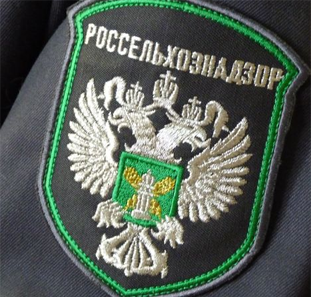The Reference Laboratory for Viral Diseases of Birds FGBI "ARRIAH" provides services for diagnostic testing for infectious bronchitis in chickens

Infectious bronchitis of chickens (IBK) is a highly contagious disease that usually affects the tissues of the respiratory tract, kidneys, stomach and oviduct. The causative agent of the disease is the chicken infectious bronchitis virus, belonging to the Coronaviridae family. The virus is ubiquitous and occurs in almost all countries with developed poultry farming. Ways of transmission of the pathogen are diverse: alimentary, aerogenic, contact and transovarial. The incubation period is quite short (1-3, rarely up to 10 days) and the disease usually covers all susceptible birds in the flock within 5-7 days. Birds of all ages are susceptible, but chickens up to 1 month old are most sensitive, their lethality reaches 25%.
Prevention of IBV, in addition to standard veterinary and sanitary measures, also includes vaccination, the effectiveness of which may decrease due to the antigenic heterogeneity of the causative virus. A large number of serotypes are known, new variant viruses are emerging, and immunity acquired to one serotype often does not provide cross protection against infection by viruses of other serotypes. This makes constant monitoring of circulating IBV isolates relevant for further optimization of the disease prevention scheme.
Over the past 2019-2021, the reference laboratory for viral diseases of birds of the Federal State Budgetary Institution "Federal Center for Animal Health" subordinate to ROSSELKHOZNADZOR has been studying samples of pathological material from different regions of RUSSIA and neighboring countries. The virus was detected in 20% of the total number of samples examined. In positive samples, both field isolates and vaccine strains of IBV were differentiated, often simultaneously with field isolates of two genetic lines: G1-19 (QX) and G1-1 (Mass).
The laboratory annually improves methods for diagnosing the disease and is currently able to reliably identify and differentiate vaccine strains and field isolates of the virus by sequencing in the condition of their cocirculation in the body of a bird.
Source: Press service of the FGBI "ARRIAH"
Read together with it:
- An HSE expert reported on the "evolution of inequality" in access to healthcare.An HSE researcher analyzed Russians' access to healthcare over a ten-year period. In 2021, the influence of financial factors became noticeable for the first time: low income reduces the likelihood of visiting a DOCTOR.Over the ten years from 2011 to 2021, the number of Russians requiring medical care but not receiving it remained virtually unchanged, according to a study by Lyudmila Zasimova, hea...
- He crawled to the icon with prayer. The true story of a man who overcame drug addiction.Alexander Ovchinnikov. Topic News. Our project's hero was a drug addict for many years. The thought that this was a dead end never left him, but his addiction proved stronger. One day, when he could no longer walk, he crawled to an icon in prayer. This became his first step toward a new life. Today, he heads a charity center that helps those who have given up hope and are unable to quit ALCOHOL an...
- Rosselkhoznadzor has banned meat imports from two Belarusian enterprises due to violations.In addition, three other Belarusian producers are now subject to strict laboratory monitoring due to initial deviations: azithromycin was found in poultry MEAT from Druzhba Poultry Farm, and the pesticide imidacloprid was found in honey from Pchalyar Polachchyny Farm. Powdered MILK from Luninetsky Dairy Plant was also found to containcoli bacteria . These measures were taken at the request of the ...
- Pharmaceutical companies see a threat to EU security due to bacteria in UkraineAntibiotic-resistant superbugs have been detected in Ukrainian soldiers since the beginning of the conflict, and now they pose a threat to Europe, according to a foundation developing antibiotics.The Ukrainian conflict threatens Europe with antibiotic-resistant "superbugs," said Henry Skinner, CEO of the AMR Action Fund, which specializes in investing in antimicrobials. His article was published o...
- В Амурскую область поступило свыше 6 тысяч тонн мяса птицы из КитаяС 3 июня по 6 ноября инспекторы проверили 290 партий мяса, все из которых были сопровождены ветеринарными сертификатами, подтверждающими их качество и безопасность. Лабораторные исследования, проведенные под контролем Россельхознадзора, не выявили нарушений, и груз был допущен на территорию России.
- Китай рассматривает возможность введения пошлин на аргентинскую говядинуВ преддверии открытия новой Китайской международной импортной выставки (CIIE), одного из важнейших торговых мероприятий в мире, возникла проблема, затрагивающая всю цепочку поставок скота и мяса из Аргентины: китайское правительство ввело «защитную» процедуру в отношении импорта говядины. Эта мера, вступившая в силу в декабре 2......
- Kyiv imposed sanctions against Dmitriev and Russia's negotiator in Istanbul.The sanctions also affected Kirill Dmitriev, the first deputy minister of education and HEAD of the Ministry of Agriculture of RUSSIA and the former head of the Constitutional COURT of Ukraine.Ukrainian President Volodymyr Zelenskyy has imposed new sanctions against Russian officials. He announced this on his TELEGRAM channel. According to a document posted on the website of the Ukrainian Presiden...
- Scientists have identified a human virus comparable to COVID-19.The human respiratory syncytial virus (RSV) may be comparable in severity to influenza and CORONAVIRUS. This is the conclusion reached by Singaporean researchers collaborating as part of the PREPARE program, according to the press service of the Singapore General Hospital. Scientists conducted three studies to assess the severity of the disease, the risk of cardiac complications, and its long-term...


